Green Crested Gecko: Everything You Need To Know
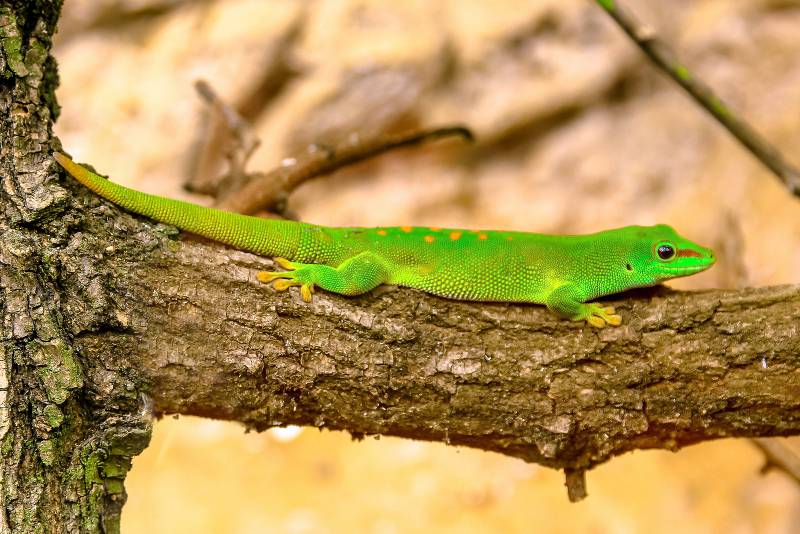
If you’ve ever thought about purchasing a crested gecko, you might’ve had a hard time deciding what kind of gecko you want. They come in so many colors and variations, it can be hard to choose. Crested geckos come in many of the same base colors: earthy tones of browns, black-like colors, reds, yellows, and greens.

Besides the base color, there are several kinds of patterns that you can choose from, and they are each unique. Some people like geckos with solid colors. Others like patterns that are subtle. And some like geckos with extreme and remarkable patterns.
These patterns can be found in a variety of colors, including green. Whether green is a real color found in crested geckos is somewhat up for debate. However, many geckos are considered “olive” which most consider a shade of green.
Contents
Table of Contents
What Is A Crested Gecko?
A crested gecko is a popular lizard kept as a pet. They are one of the best lizards for beginners to keep because they don’t require much care, but are entertaining to watch, nonetheless. To learn all about crested geckos, consult our size and diet guides.
Besides their wide variety of colors, people love them for their other physical features. Crested geckos have two long stripes of spikes running down their back. These spikes begin above their eyes, giving the illusion that they have eyebrows. There are three main types of crested gecko morphologies. They are broken down further based on traits.
Is There A Green Crested Gecko?
There is some debate whether crested geckos can really be green. They naturally come in olive colors, which are, of course, shades of green. However, some people argue that the color is not a true olive, and is more a mix or browns and yellows.
It is thought that crested geckos lack the pigments that create blue colors, meaning that they cannot produce “true” green colors. The closest we have to green crested geckos is the olive color. Whether you consider these geckos to actually be green or not depends on you.
What Makes A Crested Gecko Green (Green Crested Gecko)?
Like many lizards, crested geckos come in a variety of colors and can even change their colors. In the wild, crested geckos come in colors of earth tones, and this includes green. However, your pet gecko may be a more vibrant green than geckos you’ll find in the wild. This is because they have been selectively bred to have brighter colors.
Breeding
Breeding in crested geckos can be quite tricky. Their genetics don’t allow for “normal” breeding patterns found in other lizards. In most species, selective breeding is a numbers game. In crested geckos, the process is quite random.
Most morphologies in lizard species are categorized by one gene. These genes are recessive or dominant and are passed down through Mendelian genetics.
In crested geckos, people prefer lizards with vibrant and deeper colors. More of these lizards are purchased than the ones with duller colors.
Of course, these vibrant colors are chosen to be passed on. However, unlike other lizard species, these colors aren’t completely controlled by dominant and recessive genes.
Instead, genes in crested geckos (Green Crested Gecko) produce offspring with a wide variation of morphologies. Breeders usually don’t know what patterns they’re going to get until after the lizards have hatched.
Watch this video about Green Crested Gecko
What Are Crested Gecko Morphs And Traits?
To begin to understand the different morphs of crested geckos, you must first know what “morphology” means. Morphology is the study of the way species look and are structured.
Polymorphic creatures have different physical features within a single species. This often includes things like color. (Their polymorphic trait is also what makes breeding them so difficult).
Crested geckos are considered polymorphic because there are several kinds of crested geckos that come in all kinds of patterns.
To make it simpler, people in the trade simply refer to these color variations as the “morph”.
Patternless Crested Gecko
These geckos are simply covered in a solid color. These colors can include brown, olive, buckskin, grey-black, orange, red, and yellow.
There is no such thing as a fully white or black crested gecko, however. The closest color to black you will find is near-black.
The closest colors you’ll find to white are yellow creams or light reds. These are often referred to as “moonglow”, but they are not true white colors.
These geckos are a favorite among breeders because they are easily used to add color into another morphology.
Bi-Color Crested Geckos
Bi-color crested geckos are a type of patternless gecko with two tones of color. Usually, these will be darker in coloration than solid patternless geckos, but their heads and backs are lighter.
The back might even have some very slight patterning that is not enough to have them classified as a patterned gecko.
Tiger Crested Geckos
These geckos are so named because they have dark stripes across their backs and down their sides that resemble those of tigers. Like patternless geckos, tiger geckos can be found in browns, greens, oranges, reds, and yellows.
Although the stripes down their bodies are often darker shades of brown or black, they can come in any color.
They are not common, but one of the most popular colors is red. When a red crested gecko transitions from its juvenile to its adult stage, it goes through a process of “firing”. This is when it assumes its true color.
For red crested geckos, this means that they lose their tiger stripes and are all red. Every red crested gecko that has been studied has lost their tiger stripes after becoming an adult.
The most popular color for tiger geckos is yellow. This is because the bright coloration stands out clearly against the dark black stripes.
Brindle Crested Geckos
Brindle geckos are the same as tiger geckos, but they have a lot more stripes. The coloration of the stripes also commonly varies in intensity.
Flame Crested Geckos
The head dorsal part of a flame crested gecko’s body is usually creamy, making up the pattern that looks like “flames”. The flame-like patterns also come up along the sides of the gecko, giving it its name.
Harlequin Crested Geckos
Harlequins are another kind of flame crested gecko, but their patterns are more pronounced and extreme. Usually, the solid color of their body will be red or almost black. The “flames” will then be yellow, orange, or cream.
Unlike flame geckos, harlequins will have flame patterns up and down their limbs.
There are also crested geckos called “extreme” harlequins because they have more patterning than other harlequin geckos. These lizards will have extensive cream patterns, overtaking at least 60% of the lizard’s base color.
Other Traits
Patternless, tiger, and flame crested geckos are the three main morphologies of crested geckos. However, people like to break these groups down further to encompass specific traits.
The traits are separated by a singular feature rather than a group of traits that makes up a morph.
Pinstripe
These geckos are distinguished by the cream color that runs down the two spiky stripes along their eyes and back. The center of the back, in between these stripes, is often a solid color or a flame pattern.
Pinstripe geckos are one of the most popular varieties of crested gecko.
Phantom Pinstripe
These geckos are very similar to the pinstripe gecko, but their colors are not as highly contrasted. Their base colors are lighter and muted, with dark pinstriping. The sides and back of their body is usually darker, while the pinstripes are a light cream color that stands out.
Phantom pinstripes are much less common than “normal” pinstripes.
Lateral Stripes
Geckos with lateral stripes will usually have four stripes in total. They will have the two pinstripes that run down their spiky scales, and they will also have stripes along each of their sides.
The stripes along the sides of their body will often cause the scales to raise, so it is like these geckos truly have four stripes. These raised scales are not seen in any other kind of crested gecko.
Sometimes the stripes on their sides are not “full” stripes, but are more dotted and resemble dashes.
Dalmatian Spots
Most crested geckos with this trait will have black spots across their body ranging in size. Occasionally, some geckos will have red, green, or white spots instead.
A “super” Dalmatian gecko will have extra large spots, or a larger abundance of spots across their body. To be considered a “super” Dalmatian gecko, the lizard needs to have at least 100 spots on their body.
Dalmatian geckos with lots of spots are very popular, but not common. If you wish to purchase one of these geckos, you’ll be paying a pretty penny.
However, Dalmatian geckos with fewer, lighter spots are quite common.
White Spots
These spots are different from Dalmatian spots because they are smaller and less abundant. Rather than being found all over the body, they are commonly found on the toes, chest, nose, and belly.
These spots are usually small in size because they are not a coloration that was chosen. Instead, these white spots are a side effect of unfinished color pigmentation while the lizard was incubated.
Although it’s most common for these spots to be small, there are some geckos who will develop larger spots on their backs that appear to be leaking down their back.
Lavender
Lavender geckos aren’t as common, although they are becoming increasingly popular lately. These geckos are different from the others because they don’t change color.
Other geckos change color based on their mood, the environment, or age. Lavender geckos never go through the “firing up” or “firing down” process. Instead, their base color stays the same pale grey, lavender color.
Can Geckos Change Their Color?
Geckos can absolutely change their color. Color changes will occur as the gecko ages, and may also relate to their mood. The changing of their colors is often referred to as “firing up” or “firing down”.
Firing Up
“Firing up” occurs when the gecko changes color according to its mood, or the environment it’s in. These colors are usually more brightly toned. It occurs when a gecko is more alertly tuned to a stressor or something happening in their environment.
Changing to a brighter color doesn’t always mean that your gecko is stressed, so you shouldn’t worry too much if they frequently change color. However, if something continually happens that seems to be stressing your gecko, you should obviously work to correct it.
But, if everything is well with your gecko and their environment, they likely aren’t changing color because of stress. They will also change color to blend in with their environment, or to communicate with their tankmates. They may also change color depending on a behavior they’re displaying, or in response to the temperature or amount of humidity in their enclosure.
Firing Down
“Firing down” is when a gecko will take on darker and cooler hues. This usually occurs when they are more at ease, or when they’re sleeping.
As with people, every crested gecko is different, and not all geckos will change color. If your gecko never changes color, there’s no need to worry. Nothing is wrong with your lizard.
Conclusion: Green Crested Gecko
If you’ve wondered whether Green Crested Gecko are a real thing, we don’t have a clear answer for you. However, it’s undeniable that geckos come in an olive color. Whether you want to argue that it is a true green color, or more of a mix of grey is up to you.
One thing we can say for certain is that crested geckos come in such a variety of colors that it’s not worth arguing whether they can truly be green or not. Reds, browns, oranges, and yellows; you have such a variety of colors to choose from. Even better yet, they come in all kinds of patterns, giving each lizard its own unique look. This is all about Green Crested Gecko.
Click here to learn about yellow crested geckos or here to find all our gecko guides. Read more about the types of crested geckos here.

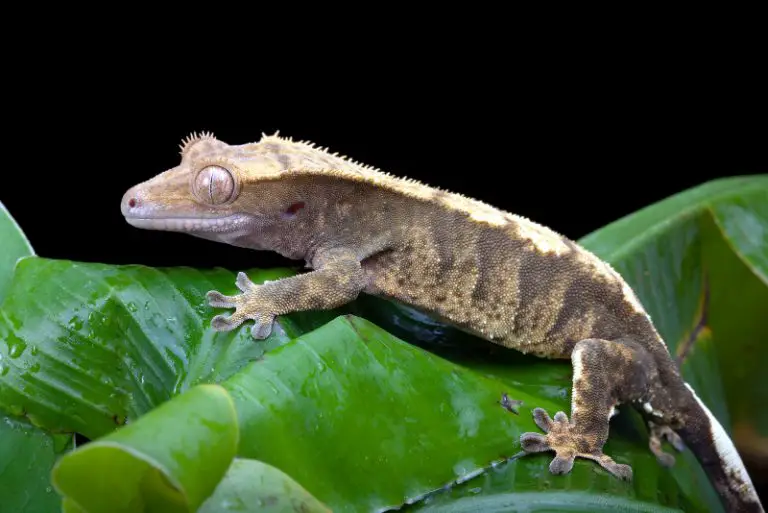
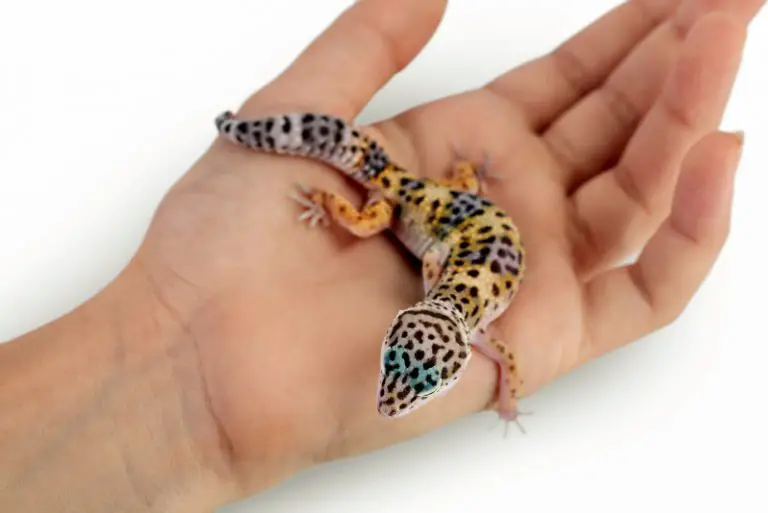
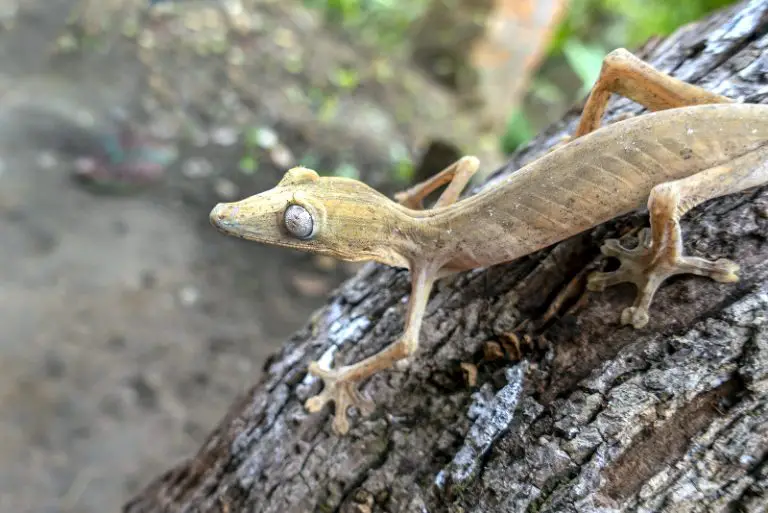
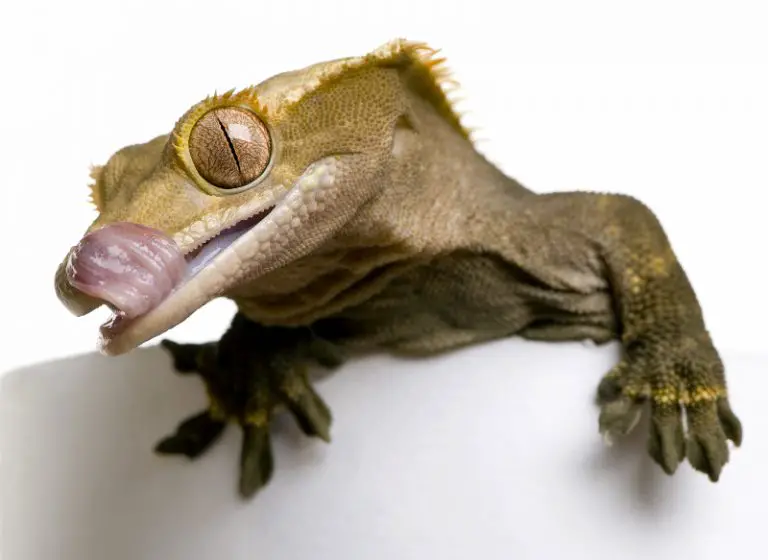

![What Fruit Can Crested Geckos Eat? [Best Fruit]](https://allourcreatures.com/wp-content/uploads/2021/12/crested-gecko-768x513.jpg)